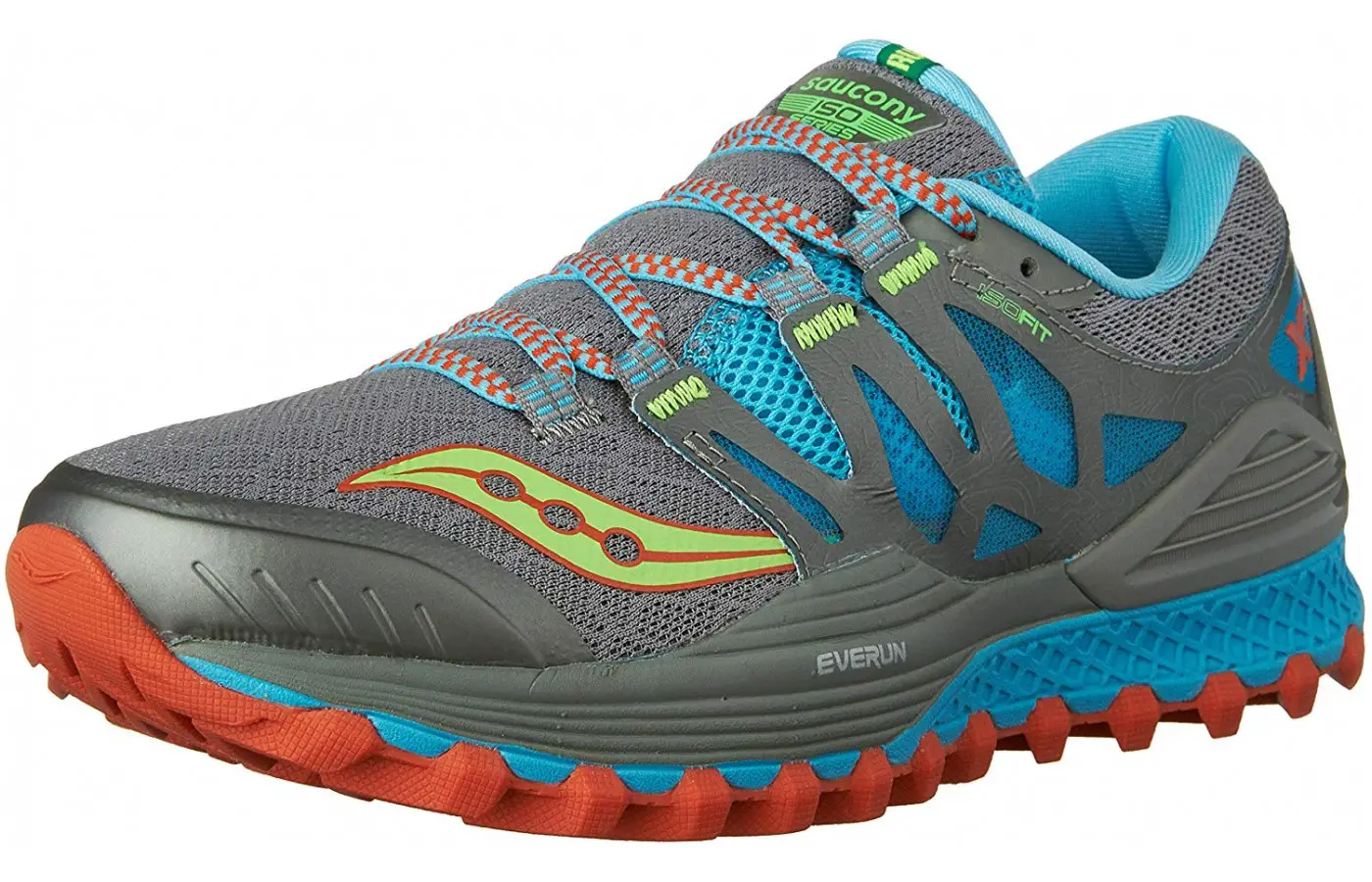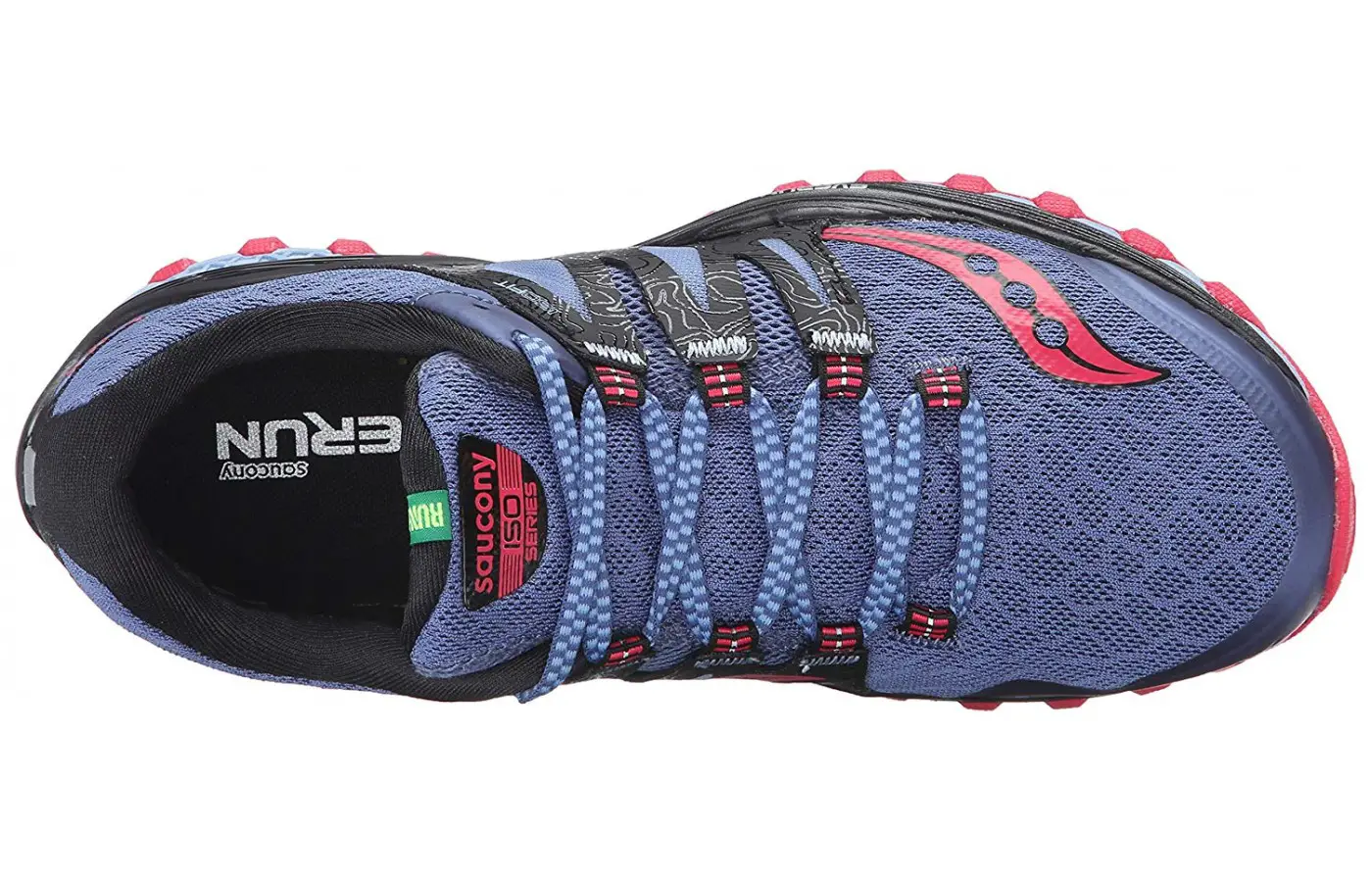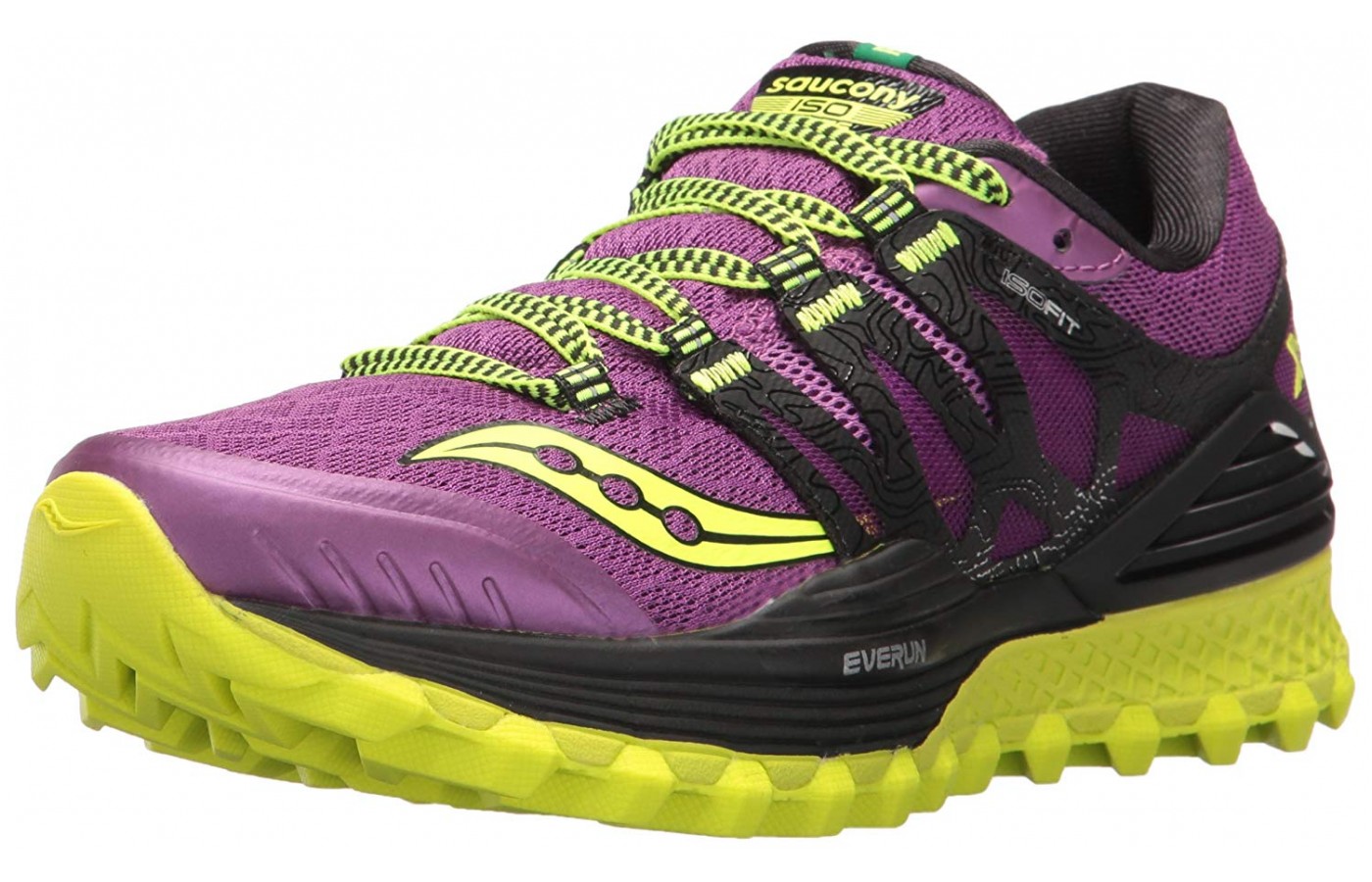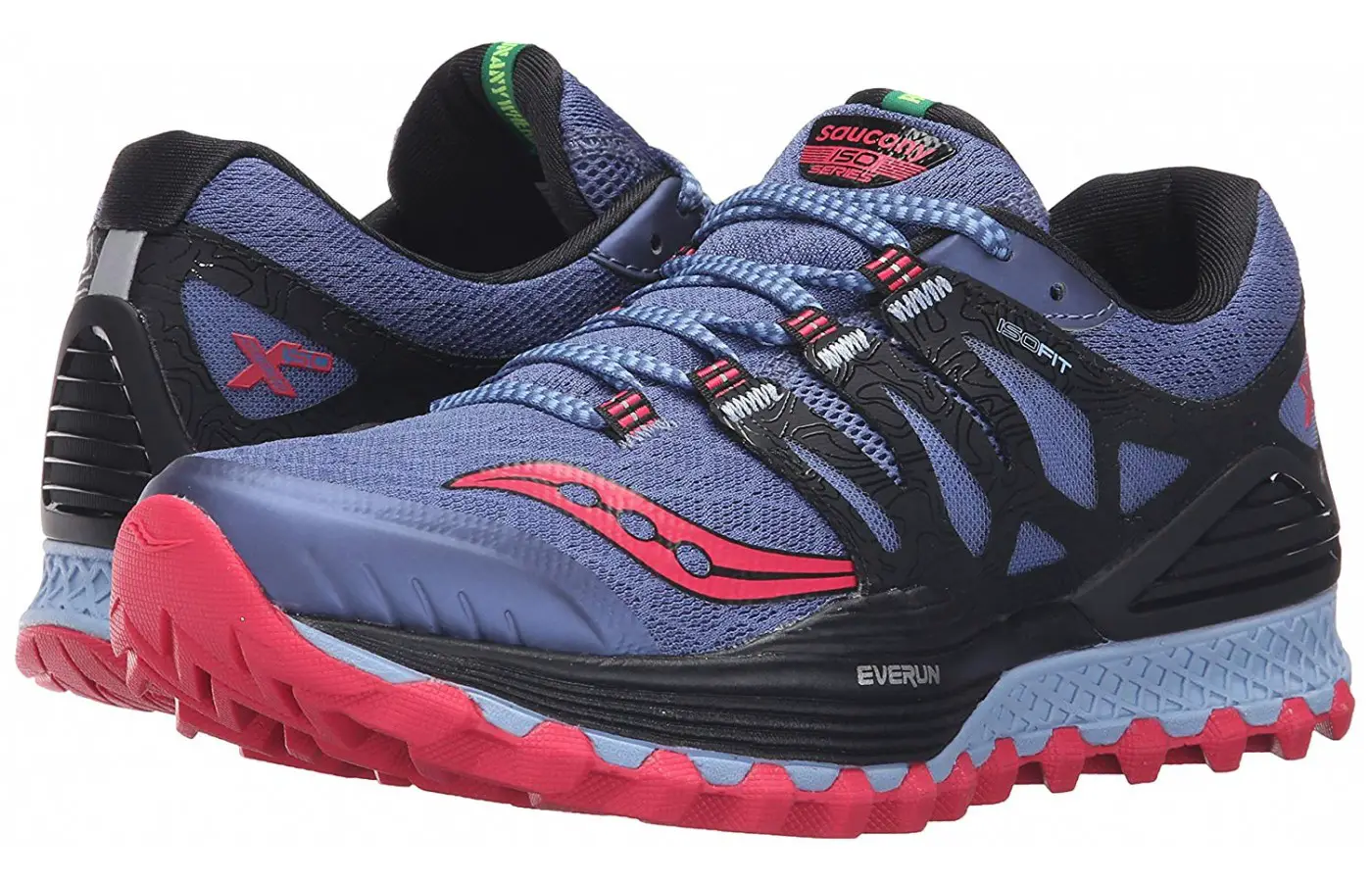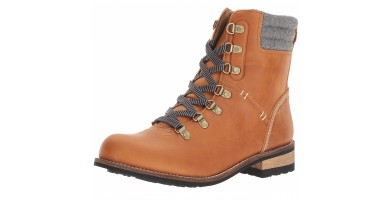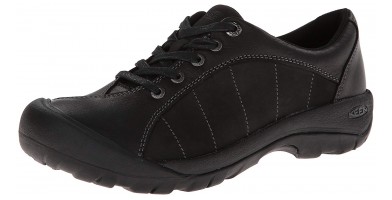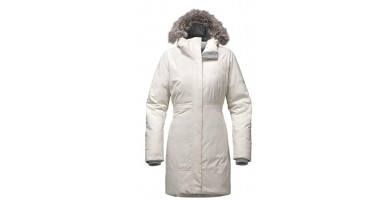When anyone says “performance shoe” there are several names that come to mind. Among those household names is Saucony, and rightly so. The word “saucony” is derived from a Native American word, saconk, that means “the place where two rivers run together”. Like many rivers throughout the United States, the word was made part of the name. The Saucony River, located near the first Saucony factory in Kutztown, PA, was not only the inspiration for the name, but even the logo. That swoop with three dots in it is meant to be a river with three boulders in it. That same logo is on just about every shoe Saucony makes, and the Saucony Xodus ISO is right up there with all of the Saucony line, bearing its banner proudly. Multiple versions of this trail-running shoe exist, but the Xodius ISO is where we’re focusing this time. Having been around for several years and still available despite updates and next generation designs, you can assume that this running shoe is definitely working, and working well.
Outsole
The outsole of the Saucony Xodus ISO is made with a sticky rubber material, something Saucony calls PWRTRAC. It comes in either a split-pointing arrow or hexagonal pattern, and the color will depend on the version of Xodus ISO you choose. The sticky rubber and non-slick surface of the outsole make this shoe great on all kinds of terrain, keeping you sure-footed whether you’re making your way along the trails, or if you prefer to run where the rubber meets the road.
Midsole
The full length of the Saucony Xodus ISO midsole bears their EVERUN foam. It has shock-attenuation, which means that when you impact your landing, it takes that blow and redirects it into a stronger takeoff, an energy return that every shoe can boast, but not every shoe can confirm. There is also a surprising amount of heel support for such a slender midsole; though it was noted that anyone who seeks specified arch support will need to look elsewhere within the Saucony family – the arch of this shoe is considered neutral at best, and those with high arches need to make mention to their fitter (or bear it in mind when ordering online) to see if they might have more need than this shoe can account for.
Upper
Some more structured shoes have a more rigid build to their uppers, but the Saucony Xodus ISO has a mostly-cloth conglomeration. It’s
ISOFIT material is a stretchy mesh that hugs the foot, fitting like a sock. In some cases, it was expressed that runners might not wear
socks with this shoe, based on the makeup of the physical upper. The ISOFIT combined with a RUNDRY collar lining make for a moisture-wick, snug fit comes in an array of colors for men and women.
Breathability
The RUNDRY collar lining and wicking material of the upper of this shoe almost make it sound confining in a negative way, but let’s quash those assumptions now. The ISOFIT mesh is designed to wick moisture and enforce breathability all around your foot. The only hard piece of the entire upper is the toe guard, and it is still a small enough surface area that there won’t be
any sweaty discomfort.
Comfort
One of the features of this particular name in the Saucony line is the sock-like snugness of the shoe’s fit around your foot. The midsole’s foam is another comfort feature, offering some all over support from heel to toe. It should be mentioned, however, that there were notes of the low drop design to this shoe being unpleasant for heel-strikers. If you find yourself putting most of your weight down on your heel when you run, you might need to try a shoe with a thicker midsole.
It was also a point of contention that the laces that come standard on the Saucony Xodus ISO, while stylish, are a tad short, and making them long enough to knot securely involved making them so tight as to be uncomfortable to the wearer. Additionally, the shoe only coming in a standard width made it more
difficult for those with wider feet to find comfort in them, the sock-like snugness of the upper backfiring a bit. A few shoe owners also noted that the shape of their foot in the material would cause the mesh to press against their big toe, and while they wouldn’t blister, it would wear toe-holes in the top of the shoe. Not everyone reported such findings, however, so if you don’t tend to have an issue with your toes fitting into standard-width shoes, these will probably be fine.
Style
The Saucony Xodus ISO, like many of the Saucony family, comes in a wide variety of colors for men and women, ranging from the denim-colored blue with pink highlights to bright orange or grey with orange accents. In fact, it’s probably harder to find a basic all-black or all-white version of this shoe. For those of us that appreciate a bright, eye-catching color for our feet, you have nothing to worry about. For a runner who might have some hang-ups about their feet, maybe consider one of the more muted color combinations. The laces of these shoes are also on the flashier side, but are also reported as being at times startlingly short. This is a simple fix: replacement laces can be found anywhere shoes are sold, at longer lengths. Just make sure you double-knot them, so you don’t trip!
Durability
Naturally, the first place we think of finding wear and tear on a shoe is going to be the bottom, since it’s the one place that impacts the most. Every step of your warm up, your run, and your cooldown – plus any corresponding trek home – is carried out by having the bottom of your outsole interacting with the trail, the pavement, or wherever you happen to be running. The individual’s stride, their gait, and their chosen terrain will cause variances in the longevity of any shoe – that said, the average estimation for purchasers came somewhere between six months and one year for avid runners. If you run less often, you may see more life out of them before you need to replace them. It should be noted that you should always consult a medical professional if you’re having recurring problems with your feet; sometimes it’s in your stride, sometimes it’s your shoe.
Protection
It’s a safe bet that anyone who hears “sock-like upper” will guess that there’s not much to this shoe in the way of form or protection. While it’s true that a more solidly structured shoe will seem more like armor, that isn’t always better for performance; the Saucony Xodus ISO is a running shoe, and bulkier is not always better. That doesn’t mean that this shoe doesn’t sport some unique advances for the purposes of
keeping your feet safe while you run. Each Xodus ISO has a molded toe shell for protection from errant rocks or other debris while running, and most wearers made a point of stating that the foam under their toes combined with the snug upper was enough cushioning that their toes weren’t slamming into the toe-mold or causing any discomfort. Another point of protection against debris is the gusseted tongue. For those who might not know, a gusseted tongue is a kind of shoe tongue that keeps pebbles, sand, and dirt from making it into the shoe through the lace gaps.
Responsiveness
Some people may not even know what “responsiveness” means in regards to a running shoe. For the most part, it means the shoe seems to redirect the energy of a step, rather than just seeming to exist on your foot. In contrast, using the term “plush” to describe how a shoe feels during a run means that the foot is notably more cushioned than in most shoes. In terms of the Xodus ISO, the EVERUN foam midsole is designed for more of a ‘responsive’ than a ‘plush’ purpose: redirecting the energy from an impact into the pushing off of the forefoot for the next stride was the goal in mind when this sneaker came to be.
Support
Generally speaking this running shoe is an example of a “neutral support level” shoe. While the Xodus ISO is pointedly not a high-arch shoe, it does have some support in that area. The ComforLite sock-like lining of the upper offers more arch and heel support than the midsole alone. For those of us that might need better insole support than the standard of what comes in the shoe,
a different, more personally appropriate insole can be added – just bear in mind that this might involve an even more snug fit, and possibly going up a half size as needed. The collar doesn’t offer much in the way of
ankle support, not being a high-top sneaker, and the RUNDRY collar lining is more for moisture management than it is for any sort of structure to the form.
Terrain
As suggested by various street runners, this shoe is more versatile than it was originally marketed for. The Saucony Xodus ISO was made and branded first and foremost as a trail running shoe. Some runners who took to the streets found that it was just as functional and comfortable on paved roads as it was in off-road conditions. Knowing that other users had success is helpful,
but not every runner will have the same experience, so the Xodus ISO can only be recommended officially as a trail-running shoe.
Price
Having second and third gen editions released means two things. First, it means that the price will have decreased from its original cost. Second, it means that there’ll probably be more ways to acquire it for
less than the current brand store price. Definitely shop these shoes if you’re going to hunt them down, and know that your general range is somewhere between $70-$130.
Traction
Every runner that had something to say about the traction of this performance sneaker was found to give the same testimony: they felt safe navigating uneven, potentially slippery, and even rocky terrain with the Xodus ISO. The molded toe shell kept small errant rocks, sand, and dirt at bay while the gusseted tongue and moisture-wick collar liner keep debris and moisture out of the top of the shoe. One Xodus ISO owner even mentioned taking these shoes through a “Tough Mudder” event without any trips or slips, and after a quick run through the washing machine they were as good as new.
Flexibility
There are shoes that are more flexible than the Saucony Xodus ISO, but there are also shoes that are less flexible. After hearing about how soft the upper is, it might be hard to believe that this particular shoe isn’t right up there
with actual socks in terms of flexibility, but the truth of the matter is, the outsole being built for off-road trails means that there’s a certain amount of stiffness. After all, it isn’t a bedroom slipper – your feet wouldn’t be as well protected, and the support would be nil, if it were – and not being able to completely bend the shoe in half should not be taken as a bad thing. That said, there are more structured, thick, and stiff options for performance footwear than the Xodus ISO, as well. The truth of the matter is, some people fare better in different situations with different levels of flexibility, so the best advice on this score is to find the shoes in person and physically interact with them. Bend, flex, try them on – do everything you can to assure that you’re comfortable with the range of motion, security, and stability they have to offer.
Stability
Plenty of consumers who wear the Xodus ISO say that the foam of the midsole doesn’t easily break down, despite being on the thinner side as compared with some other, bulkier shoes. The toe holes being worn in the top of the front of the shoe are a notable flaw, but aren’t terribly common. There is also a bit less ankle support than running shoes that have a higher collar or more pronounced tongue area, but again that depends on what each individual runner finds comfortable. It’s also been suggested that the shoe fits so well and so snugly on its own that there is no real need to wear socks with them. While such a testimony is certainly plausible, it is worth mentioning that not wearing socks in shoes in general is a good way to wear them out faster. In other shoes such common occurrences as insole breakdown (or even complete disconnection) can occur, as well as lace tension breakdown. Like any horse girth,
belt buckle, or off-the-rack shoe with laces, you will eventually have to tighten them to get back that snug feeling after they’ve been worn in for a while.
Key Features
-ISOFIT stretch upper material and RUNDRY collar lining for moisture wicking control
-gusseted tongue and molded toe shell or foot protection
-PWRTRAC rubber material outsole for great traction
-EVERUN foam midsole for energy redirection properties
The Bottom Line
Qualifying as a low-drop shoe at only a 4mm difference in height from heel to toe is another factor that each runner must consider for themselves. All of the facts and technical dimensions in the world are helpful input, but nothing will really matter until you obtain a pair and try them on for yourself. Consider where you’ll be running, what kind of stride and footfall you have as a runner, and (as with any sport) take into account
any and all medical needs before marrying any item of
gear. If you have wide feet, this shoe will likely be found to feel too tight or uncomfortable toward the forefoot. If you have high arches, you’re probably going to be on the lookout for something with firmer arch support, or testing out an insole that you can comfortably add to this shoe’s existing design. None of these disqualifications make the Saucony Xodus ISO a bad shoe – it just might mean you need to look to other avenues, even within the Saucony brand. If you have no such concerns, however, then the Saucony Xodus ISO could very well be the running shoe to best suit your needs. None of the ‘cons’ listed here have been marked as defects, but rather a testament to the age-old saying “no two are alike”. While it’s true that many feet are similar, it’s Saucony’s job to make shoes for all foot types; it’s your job to make sure the shoes you put on your feet are something you can comfortably trust to run in without fear. It’s always a good idea to be logical when looking at shoes, and not be pulled in by gorgeous, flashy colors and a pretty shape. Put them on, and
see if you’ve found your fit. If the Saucony Xodus ISO is for you, the longevity of the model on the market speaks for itself, and it says “happy trails”.





